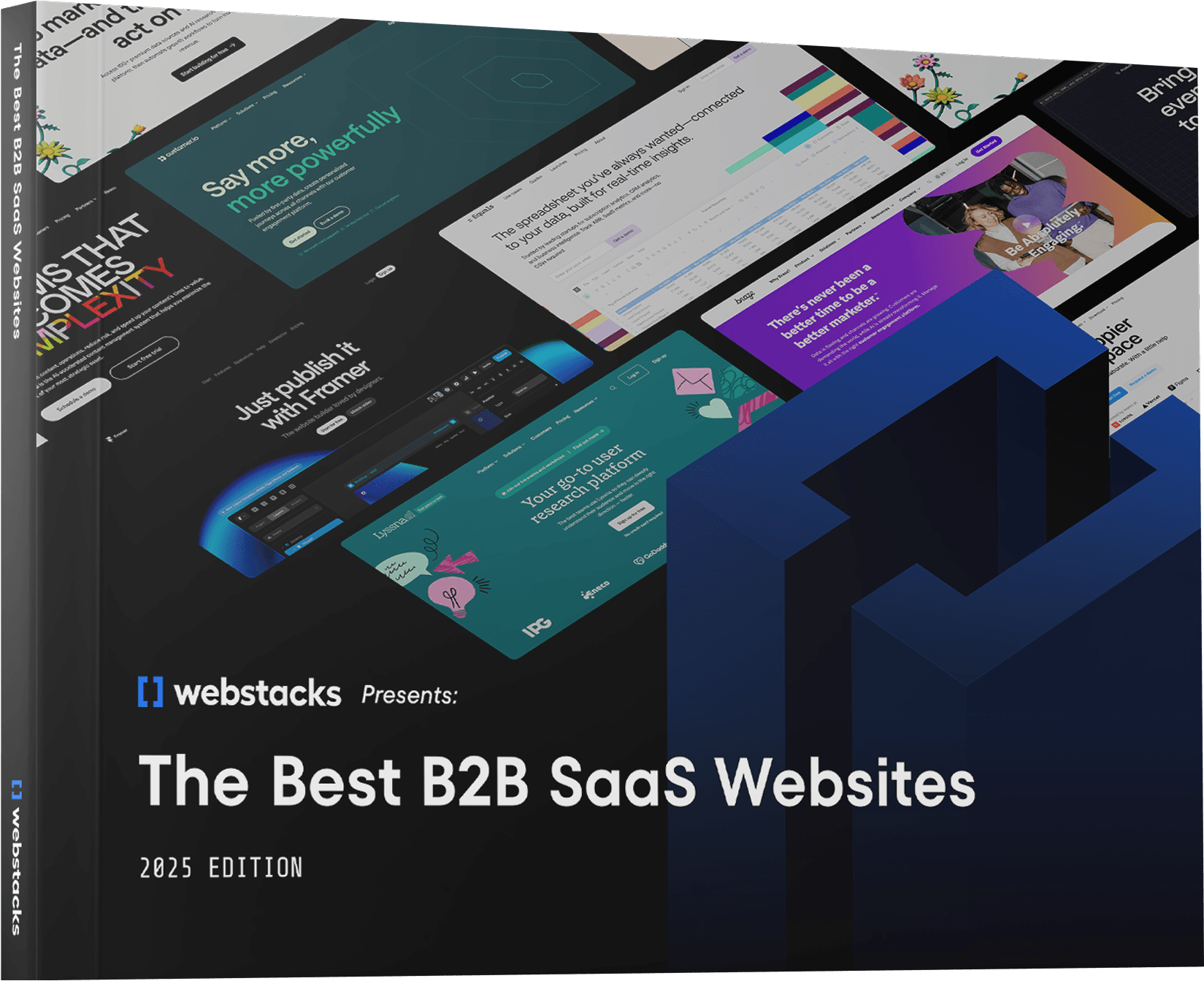Content is becoming increasingly important for B2B websites, with 82% of marketers investing in content marketing in 2024.
However, creating an effective content strategy isn’t very straightforward.
With the emergence of AI and the shifting landscape of Google’s SERPs, there are plenty of new challenges and opportunities for creating a high-quality, well-rounded content ecosystem.
In this article, we'll explore the concept of content ecosystems and why this approach to content is key to creating an effective online presence for B2B marketers.
Key Takeaways:
- A content ecosystem is essential for a diverse B2B website.
- Key components include content types, creation strategies, governance, distribution methods, analytics, and platforms.
- Building a content ecosystem involves audience identification, content pillars, strategy development, content diversification, and multi-channel repurposing.
- Benefits include improved engagement, increased brand visibility, and enhanced customer experience, outweighing the challenges.
What is a Content Ecosystem?
A content ecosystem refers to a network of interconnected content assets that work together to support your B2B digital marketing efforts.
A well-planned content ecosystem ensures a consistent message, engages your audience, and drives desired outcomes. By establishing a content network that connects all aspects of your digital content strategy, you create a cohesive experience for your users and maximize the impact of your content.
Content marketing has proven to be a powerful tool, boosting lead generation for 74% of companies. With a content ecosystem in place, your website can effectively attract and retain visitors, increase organic traffic, and generate leads. Strategically integrating these components builds a strong foundation for your website's success.
Components of a B2B Content Ecosystem
Creating a successful content ecosystem for your B2B website involves understanding various interconnected components that work together to support your digital marketing efforts.
These components include:
1. 💼 Content Types: Variety and Use Cases
Content types refer to the various formats in which your content is presented to your audience. Use a variety of content types to cater to different preferences and engage your audience effectively.
Common content types include:
- Blog posts
- Articles
- Infographics
- Podcasts
- Videos
- Whitepapers
Each type has its unique use cases, helping you reach a wider audience and deliver your message in diverse ways.
2. 🧠 Content Creation: Strategies, Tools, and Workflows
Content creation involves the planning, development, and production of content. It's crucial to have well-defined strategies, use appropriate tools, and establish efficient workflows to ensure consistent production of high-quality content.
Effective content creation strategies and tools include keyword research, content calendars, collaboration platforms, content management systems (CMS), graphic design software, and video editing tools.
3. 🏛 Content Governance: Processes and Standards
Content governance establishes processes and standards for the creation, management, and maintenance of content, ensuring alignment with the organization's goals, brand voice, and quality standards.
Elements of content governance include content and brand style guides, editorial workflows, review and approval processes, and compliance and legal considerations.
4. 🚚 Content Distribution: Marketing and Repurposing
Content distribution involves the strategic promotion of your content to reach your target audience. This includes selecting appropriate channels and methods for effective distribution.
Content distribution methods include:
- Social media marketing
- Email marketing campaigns
- Search engine optimization (SEO)
- Content partnerships and collaborations
- Repurposing content for different platforms
5. 📈 Content Analytics: Measurement and Optimization
87% of marketers believe that data is the most under-utilized asset in their company. Content analytics is crucial for understanding how well your content is performing and finding ways to make it better. It gives you insights into what’s working and what isn’t, helping you fine-tune your strategy.
Key areas of focus include website traffic analysis, engagement metrics like bounce rate and time on page, conversion tracking, A/B testing, and keyword performance.
Using these analytics, you can make informed decisions to improve your content, ensure it resonates with your audience, and achieve your goals. Regularly analyzing and tweaking your content keeps it effective and relevant.
6. 📁 Content Platforms: CMS and Other Technologies
Content platforms refer to the tools and technologies used to manage and deliver content to your audience. A widely used content platform is a Content Management System (CMS), which provides a centralized platform for content creation, organization, and publication.
The importance of a CMS cannot be understated - it is the foundation of your content marketing. If your team faces challenges with organizing and publishing content, it will add unnecessary complexity to your content ecosystem. To remedy this, you may need to ditch your old CMS and migrate to a new environment for a fresh start.
Beyond the CMS, you should also evaluate your larger marketing tech stack. This includes tools such as email marketing platforms, CRMs, and analytics tools.

Building a Content Ecosystem
In order to create a flourishing and cohesive online presence for your business, it is crucial to build a content ecosystem for your website.
So far, we’ve covered the processes and mediums for creating content. However, we haven’t discussed what to include in your content ecosystem.
This is just as important, if not more. If your content isn’t aligned with several key factors, your ecosystem will contain low-quality, ineffective content that doesn’t produce tangible results. Next, we’ll go through important steps to B2B content strategy that will be the foundation of your content ecosystem.
Step 1 - Identify Your Business Objectives
Every content strategy should begin by understanding the goals of the business.
When executed properly, content marketing isn’t cheap. At the end of the day, you’ll be spending tens of thousands of dollars on content from the people creating the content to the tools you’ll need to manage your operations. You need to make sure that this investment is justifiable, and will be done in the pursuit of some broader goal (brand awareness, leads, sales, etc).
These goals should be taken from leadership and translated into marketing objectives. Ask yourself, what can content marketing do to help the business achieve its objectives?
Step 2 - Understand the Business
This could also be considered step 1.b, but either way, the content team should also be responsible for understanding the business, its products, and its solutions. This will help guide the content strategy and seamlessly tie the content back to the organization. Content marketing should conduct interviews with various stakeholders (leadership, product marketing, sales, etc) to get a comprehensive understanding of the business and uncover potential content opportunities.
Step 3 - Identify Your Audience
It is essential to have a deep understanding of your target audience. Conduct thorough audience research and analysis to identify their demographics, interests, preferences, and pain points.
Find out what content has performed well in the past. Pinpoint the mediums that have the most potential, and determine wher you’ll be investing your efforts.
By understanding who your audience is, you can create content that resonates with them and meets their needs, helping you attract and engage a loyal following.
Step 4 - Develop Content Pillars and Themes:
Develop content pillars and themes that align with your audience's interests and needs. Content pillars are overarching topics that represent the core areas of expertise or focus for your brand. These pillars guide your content creation efforts and ensure that your content is relevant, valuable, and consistent.
Once you have identified a pillar, populate it with subtopics. Identify what objective this content should be pushing towards.
Step 5 - Diversify Content Types
To cater to different preferences and platforms, it is important to diversify your content types. Create a mix of blog posts, videos, podcasts, infographics, case studies, and more.
Diversifying content has been shown to boost internet penetration by an average of 62-85% and increase business services by 1.8 times during this transition. By diversifying your content, you can reach a broader audience and enhance their engagement with your brand.
Step 5 - Recycling for Other Channels
Repurposing your content for use across multiple channels is a key step in building a content ecosystem. Adapt your existing content to suit different platforms and formats.
For example, turn a blog post into a video or create social media posts from your podcast episodes. By repurposing your content, you can maximize its reach and effectiveness, ensuring that your message is heard across various channels. Unified omnichannel content marketing has compounding effects that cannot be understated.
Challenges in Developing a Content Ecosystem
In the process of developing a B2B content ecosystem, you may encounter various challenges that require careful consideration and strategic planning. Let's explore these challenges and discuss potential solutions to overcome them.
Maintaining Consistency Across Channels
91% of businesses use two or more social media channels. One of the key challenges in content ecosystem development is maintaining consistency in messaging and branding across all channels.
With multiple platforms and channels, it can be difficult to ensure that your content aligns with your brand's image and conveys a consistent message to your audience. Consistency is crucial in establishing trust, credibility, and recognition for your brand.
Scalability Issues
As your content ecosystem grows, scalability becomes an inevitable challenge. The content ecosystem must be able to support the increasing volume of content without losing its effectiveness and efficiency.
This involves designing a scalable infrastructure that can handle the growing demands of content creation, storage, and distribution. Implementing content management systems (CMS) and automation tools can greatly assist in managing the expanding content library and streamlining workflows.
One effective solution is adopting a headless CMS. A headless CMS decouples the content management backend from the frontend presentation layer, allowing content to be delivered via APIs to any platform or device.
This flexibility makes it easier to scale and adapt your content ecosystem as it grows, ensuring efficient management and distribution across multiple channels.
Ensuring Content Quality and Relevance:
Another critical challenge in content ecosystem development is ensuring the quality and relevance of your content. Competition for attention is intense, it is essential to produce high-quality content that resonates with your target audience. Your content should speak from the unique perspective of your employees and the business.
Content quality involves providing valuable, accurate, and engaging information that addresses the actual problems and interests of your audience. Relevance, on the other hand, refers to producing content that is timely, up-to-date, and aligned with the current trends and topics in your industry.
Benefits of a Well-Integrated Content Ecosystem
A strong content ecosystem helps you connect with your target audience, establish your brand as a thought leader, and deliver a seamless and personalized experience to your customers.
- Improved Audience Engagement: By providing valuable, relevant, and timely content across multiple platforms, you can capture the attention and interest of your target audience. This leads to increased interaction, higher levels of participation, and a stronger connection with your brand.
- Increased Brand Visibility: A well-integrated content ecosystem enables you to expand your brand visibility and reach a wider audience. By utilizing various channels and mediums, such as social media, email marketing, blogging, and video content, you can amplify your brand's presence and attract new customers. Consistency in brand messaging and visual identity ensures that your brand remains recognizable and memorable.
- Enhanced Customer Experience: A content ecosystem allows you to provide a seamless and personalized customer experience. By understanding your audience's preferences, needs, and behaviors, you can create tailored content that resonates with them at every touchpoint. This personalized approach not only enhances customer satisfaction but also fosters loyalty and advocacy, leading to long-term relationships and increased customer lifetime value.
These benefits help you connect with your target audience, establish your brand as a thought leader, and deliver a seamless and personalized experience to your customers.

Looking to Build A Content Ecosystem for Your Website?
Now that you understand the concept and components of a content ecosystem, it's time to build a content ecosystem of your own tailored to your B2B marketing needs.
By implementing a content ecosystem, you can create a cohesive and engaging online presence that resonates with your target B2B audience.
While building a content ecosystem may come with its challenges, the benefits far outweigh the difficulties. A well-integrated content ecosystem will improve audience engagement, boost your brand visibility, and enhance the overall customer experience.




